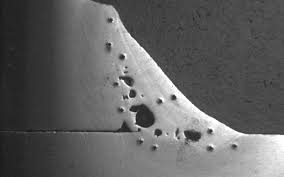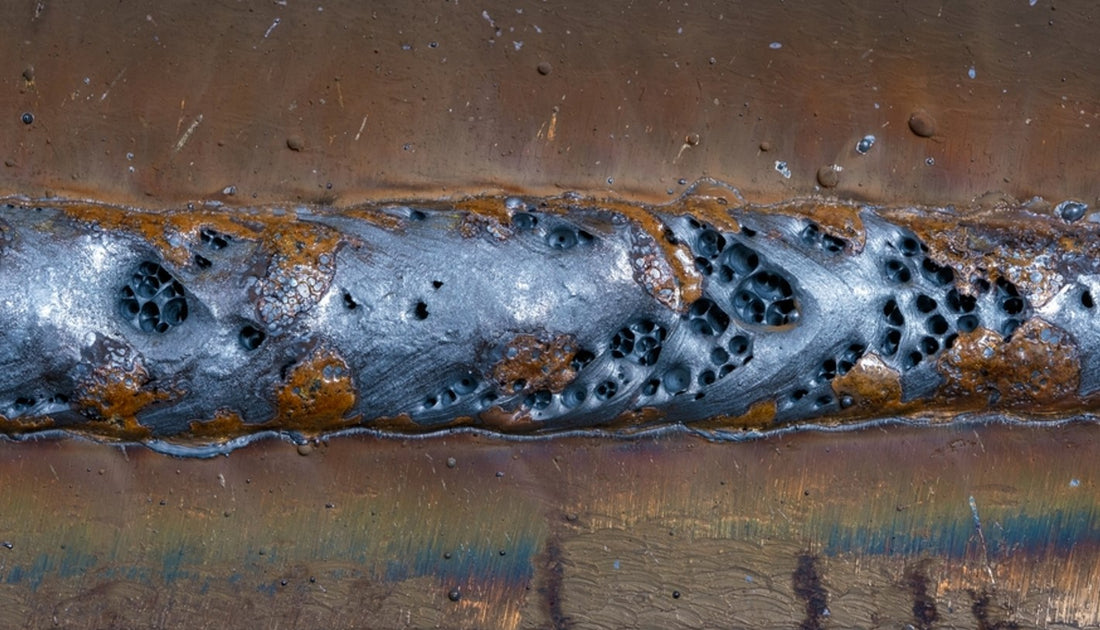What is Porosity in Welding: Trick Factors and Their Influence On Weld High Quality
What is Porosity in Welding: Trick Factors and Their Influence On Weld High Quality
Blog Article
Deciphering the Secret of Porosity in Welding: Tips for Reducing Issues and Taking Full Advantage Of Quality
In the detailed globe of welding, porosity stays a persistent challenge that can significantly impact the high quality and stability of welded joints. As we dig right into the midsts of porosity in welding, revealing the keys to its avoidance and control will be critical for experts looking for to understand the art of high-quality weldments.
Understanding Porosity in Welding
Porosity in welding, a common issue encountered by welders, describes the visibility of gas pockets or gaps in the bonded product, which can jeopardize the stability and high quality of the weld. These gas pockets are usually caught during the welding procedure as a result of different elements such as incorrect shielding gas, infected base products, or inaccurate welding specifications. The formation of porosity can compromise the weld, making it susceptible to cracking and deterioration, inevitably resulting in structural failures.
Understanding the origin triggers of porosity is important for welders to efficiently prevent its event. By acknowledging the significance of keeping appropriate gas securing, making sure the cleanliness of base materials, and optimizing welding setups, welders can substantially minimize the possibility of porosity development. Additionally, making use of techniques like preheating the base product, utilizing proper welding methods, and carrying out extensive inspections post-welding can further aid in decreasing porosity problems. On the whole, a detailed understanding of porosity in welding is essential for welders to create top quality and long lasting welds.

Usual Reasons For Porosity
When examining welding processes for potential top quality issues, understanding the common causes of porosity is important for preserving weld stability and stopping architectural failings. Porosity, defined by the existence of tooth cavities or spaces in the weld metal, can considerably compromise the mechanical residential or commercial properties of a welded joint.
In addition, welding at incorrect specifications, such as excessively high travel speeds or currents, can generate too much disturbance in the weld pool, trapping gases and creating porosity. By attending to these typical reasons via correct gas securing, material prep work, and adherence to ideal welding parameters, welders can reduce porosity and improve the quality of their welds.
Methods for Porosity Avoidance
Carrying out effective safety nets is vital in reducing the event of porosity in welding processes. One method for porosity avoidance is making certain correct cleaning of the base steel before welding. Pollutants such as oil, oil, corrosion, and paint can bring about porosity, so extensive cleansing making use of proper solvents or mechanical approaches is vital.

An additional key safety net is the selection of the best welding consumables. Utilizing top quality filler products and securing gases that appropriate for the base metal and welding process over here can substantially lower the risk of porosity. Additionally, maintaining appropriate welding criteria, such as voltage, existing, take a trip rate, and gas flow rate, is vital for porosity prevention. Deviating from the suggested settings can cause inappropriate gas insurance coverage and inadequate fusion, leading to porosity.
Furthermore, employing correct welding strategies, such as keeping a constant traveling rate, electrode angle, and arc length, can aid protect against porosity (What is Porosity). Ample training of welders to guarantee they comply with best practices and top quality control procedures is likewise important in reducing porosity defects in welding

Ideal Practices for Top Quality Welds
One key practice is preserving proper cleanliness in the welding area. Extensively cleaning the workpiece and surrounding location before check my site welding can aid alleviate these problems.
An additional finest practice is to thoroughly select the proper welding criteria for the details materials being signed up with. This includes establishing the right voltage, existing, travel speed, and protecting gas circulation rate. Appropriate criterion selection makes sure optimum weld penetration, combination, and total quality. Using top notch welding consumables, such as electrodes and filler steels, can considerably affect the last weld high quality. Buying costs consumables can result in more powerful, extra durable welds with fewer problems. By complying with these best practices, welders can regularly create top notch welds that fulfill sector criteria and go beyond customer expectations.
Significance of Porosity Control
Porosity control plays a crucial duty in guaranteeing the stability and high quality of Extra resources welding joints. Porosity, characterized by the presence of cavities or voids within the weld steel, can substantially jeopardize the mechanical buildings and architectural stability of the weld. Extreme porosity deteriorates the weld, making it a lot more susceptible to cracking, deterioration, and general failure under functional tons.
Effective porosity control is crucial for maintaining the desired mechanical residential or commercial properties, such as stamina, ductility, and strength, of the welded joint. What is Porosity. By lessening porosity, welders can enhance the total quality and reliability of the weld, making sure that it meets the performance needs of the intended application
Moreover, porosity control is crucial for achieving the preferred aesthetic look of the weld. Excessive porosity not just weakens the weld however additionally interferes with its visual allure, which can be vital in sectors where looks are necessary. Correct porosity control strategies, such as using the correct protecting gas, managing the welding criteria, and ensuring proper tidiness of the base products, are important for creating high-grade welds with very little issues.

Verdict
To conclude, porosity in welding is an usual problem that can endanger the quality of the weld. By understanding the reasons of porosity and executing correct avoidance strategies, welders can lessen flaws and attain greater high quality welds. It is vital to control porosity in welding to guarantee the stability and stamina of the final product. Executing finest methods for porosity control is vital for accomplishing ideal welding results.
Report this page